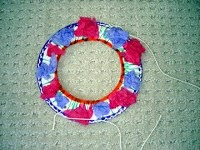“Children tell us things by their behavior.” And one thing you might have noticed about your students’ behavior recently is their frustration from testing. Do they seem to be a little “testy” with their classmates? Here are some ideas that may help them work out conflicts.
Friendship Lotion (Jennifer Smith)
Write “friendship lotion” on a bottle of lotion or disinfectant. (You could also use an empty bottle.) Children take turns passing it around as they put some in their hands. When everybody has some rub your hands together as you say…”It smells like friendship.”
*This is a perfect way to remind students to be kind to friends.

Peace Corner (Jillian Teder)
Set up a "peace corner" in your classroom where children can go to self-regulate and regain self control before returning to the group when they are overwhelmed or frustrated.
Peace Flower
You’ll need a large fake flower to make “peace.” When two children come to you to solve an argument hand them the flower. Explain that they must both hold the flower with two hands and look at each other. When they’ve worked out their problem and have “peace” they can hug and go back and play.

Peace Talks
Here's another “peaceful” way to solve problems using a composition book or spiral notebook. Ask the children who have had a conflict to sit next to each other at a table. Open the notebook and put it between them. Explain that you want to know both of their opinions of what the problem is. Give them pencils and ask them to write and draw their version of what happened in the book. When they have resolved their problem they can bring you the book and go back and play.

WISHING YOU A DAY THAT'S PEACE AND QUIET!!!





















































